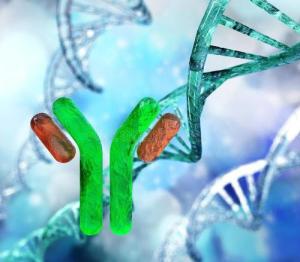


|

| 产地 | 中国 |
| 品牌 | Chemstan |
| 保存条件 | Use a manual defrost freezer and avoid repeated freeze thaw cycles.Store at 4 °C for frequent use.Store at -20 to -80 °C for twelve months from the date of receipt. |
| 货号 | ATA28187 |
| 用途 | 仅供科研用 |
| 应用范围 | IHC-p |
| CAS编号 | |
| 抗体名 | DMBT1 rabbit Polyclonal Antibody |
| 克隆性 | |
| 靶点 | DMBT1 |
| 适应物种 | Human,Mouse,Rat |
| 形态 | Liquid |
| 宿主 | Rabbit |
| 包装规格 | 100ul |
| 亚型 | |
| 纯度 | % |
| 标识物 | Unconjugated |
| 浓度 | 1mg/ml% |
| 免疫原 | Synthesized peptide derived from part region of human protein |
| 是否进口 | 否 |
用一种包含多种抗原决定簇的抗原免疫动物,可刺激机体多个B细胞*产生针对多种抗原表位的不同抗体。所获得的免疫血清实际上是含有多种抗体的混合物。
产品概述
产品名(Product Name)
DMBT1 rabbit Polyclonal Antibody
货号(Catalog No.)
ATA28187
种类(Category)
Primary antibodies
表达宿主(Host)
Rabbit
反应种属(Species specificity)
Human,Mouse,Rat
应用实验(Tested applications)
IHC-p
*性(Clonality)
Polyclonal
偶连物(Conjugation)
Unconjugated
免疫原(Immunogen)
Synthesized peptide derived from part region of human protein
产品性能
状态(Form)
Liquid
存放条件(Storage)
Use a manual defrost freezer and avoid repeated freeze thaw cycles. Store at 4 °C for frequent use. Store
at -20 to -80 °C for twelve months from the date of receipt.
纯化方式(Purity)
The antibody was affinity-purified from rabbit antiserum by affinity-chromatography using epitope-specific
immunogen.
应用
IHC-p 1:50-300
产品背景
deleted in malignant brain tumors 1(DMBT1) Homo sapiens Loss of sequences from human chromosome 10q has been associated with the progression of human cancers. This gene was originally isolated based on its deletion in a medulloblastoma cell line. This gene is expressed with transcripts of 6.0, 7.5, and 8.0 kb in fetal lung and with one transcript of 8.0 kb in adult lung, although the 7.5 kb transcript has not been characterized. The encoded protein precursor is a glycoprotein containing multiple scavenger receptor cysteine-rich (SRCR) domains separated by SRCR-interspersed domains (SID). Transcript variant 2 (8.0 kb) has been shown to bind surfactant protein D independently of carbohydrate recognition. This indicates that DMBT1 may not be a classical tumor suppressor gene, but rather play a role in the interaction of tumor cells and the immune system. [provided by RefSeq, Mar 2016],